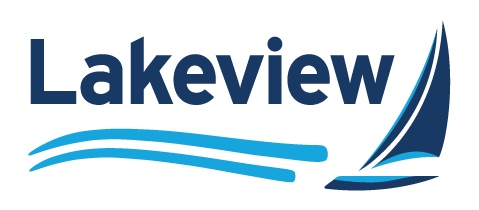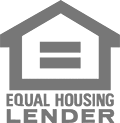Choose the Right Financing Option for Your Needs
When you bought your home, obtaining a mortgage was probably the obvious financing choice. For other needs, though, the best lending option isn’t always so clear. It’s important to consider your options as the choice you make can impact qualifying criteria, payment affordability, upfront costs and your interest rate.
Factors to Consider
Start asking yourself the questions below.
- Why do you need the money? Is the financing for a specific use (like a car or a home) or “general purpose?”
- What’s your timeline? Credit cards and personal loans enable you to access funds quickly, while you may need more time to obtain funds using a new home equity account. Similarly, it’s important to understand the repayment terms, including monthly payment deadlines and when your balance must be paid in full.
- What’s the interest rate? Know whether the rate is fixed (meaning it won’t change during the loan term) or variable (meaning it could increase or decrease over time). If it’s variable, are there caps limiting the periodic or lifetime interest rate increase? Also be sure to estimate the total interest you’ll pay over the life of each loan option. What
- What monthly payment can you afford? Know your budget and only borrow what you can comfortably pay back without creating financial stress. The amount borrowed, interest rate and loan term will impact the monthly payment.
- What other costs are involved? Ask about potential fees, such as processing, underwriting or origination fees, as well as charges for late payments or for paying off the loan early.
- Is collateral required? As we’ll discuss below, there are two primary types of lending solutions — those that require collateral (secured) and those that don’t (unsecured).
Secured Lending Options
Secured financing requires that you have collateral, which the lender holds a lien against until you pay off the loan. This is often a vehicle or other asset you purchased with the loan proceeds. If you default, the lender can claim the collateral to cover their loss. Because of this, secured lending options are potentially less risky for the lender. For this reason, secured financing tends to have lower interest rates and longer repayment periods than unsecured loans.
Mortgages are among the best-known secured lending options. Other examples include:
- Home equity financing – Lets you borrow against your home equity, making your home the collateral. There are three primary types of home equity financing. Each is ideal for financing home improvements but can be used for nearly anything.
- Mortgage cash-out refinance replaces your current mortgage with a new one that provides you with an additional lump sum of funds to use. You can also adjust your mortgage loan term, interest rate (subject to current rates) and current monthly payment in the course of refinancing.
- Home equity loan provides you with a lump sum through a second mortgage.
- Home equity line of credit provides a revolving line of credit that you can borrow from again and again up to your credit limit, making it useful for recurring expenses or emergencies.
- Cash-secured loan – Provides a lump sum using money in your savings account, or a certificate of deposit, as collateral. This is ideal when:
- You want to build or rebuild your credit
- You don’t qualify for an unsecured credit card or other types of financing
- You have money that you don’t need for other purposes
- Secured credit card – Provides a line of credit using cash you deposit to the card account as your credit limit. It’s ideal when:
- You want to build or rebuild your credit
- You don’t qualify for an unsecured credit card or other types of financing
- You want to pay for smaller or recurring expenses
- You have money that you don’t need for other purposes
- Vehicle loan – Ideal when:
- You’re comfortable using your new car, boat or recreational vehicle as collateral
- You want a better interest rate or different repayment terms compared to unsecured financing
- You want to secure financing outside of a dealership
Unsecured Lending Options
Unsecured financing doesn’t require collateral. Qualification is based primarily on your creditworthiness, including your credit history, credit score and income. These solutions are riskier for lenders. Because of this, unsecured financing may have higher interest rates and stricter qualification requirements than secured financing.
Examples of unsecured lending options include:
- Personal loans – Can be used for nearly any purpose, from an unexpected home repair or medical expense, to a planned event like a dream vacation or wedding. They typically have lower interest rates than credit cards, with terms from a few months to a few years.
- Private student loans – Help bridge any funding gaps between education savings and financial assistance from federal loans, grants and school aid. May offer repayment options, such as deferred or interest-only, as well as variable or fixed interest rates.
- Most credit cards – A revolving line of credit to borrow from again and again, up to your credit limit. Options include cards featuring low interest rates, cash back and rewards.
Next steps
Before applying for any type of financing, it’s always a good idea to check your credit report and make sure there are no errors or omissions in your credit history. This can increase your chances of qualifying for the financing you want, with the best interest rate and terms.
Learn more about your financing options through a lender you already know and trust. Visit us online or call 1-844-518-2360.
Sources
- “What type of loan should I get?” John Egan, Experian.com, posted March 6, 2022, https://www.experian.com/blogs/ask-experian/what-type-of-loan-should-i-get/#:~:text=Choose%20a%20loan%20based%20on,term%20and%20the%20monthly%20payment, accessed May 11, 2023
- “Here’s the Difference Between Secured and Unsecured Loans,” Megan DeMatteo, CNBC.com, posted Jan. 23, 2023, https://www.cnbc.com/select/secured-loans-vs-unsecured-loans/, accessed May 11, 2023
- “How do secured loans work?” Hanneh Bareham, Aylea Wilkins, Bankrate.com, posted Dec. 18, 2022, https://www.bankrate.com/loans/personal-loans/what-is-a-secured-loan/, accessed May 11, 2023
- “Unsecured Loans: Borrowing Without Collateral,” James Chen, Eric Estevez, Amanda Bellucco-Chatham, Investopedia.com, updated Feb. 9, 2023, https://www.investopedia.com/terms/u/unsecuredloan.asp#:~:text=An%20unsecured%20loan%20is%20a,student%20loans%2C%20and%20credit%20cards, accessed May 11, 2023




